The Exoticiser
A patent discloses and protects? A wonder deblocks and offends? A wonderful patent is able to re-order the social. It assembles and reconfigures human and non human actors. It may create needs and human necessities. It is a fragile socio-technical-scientific device that desperately looks for allies. Are you willing to become enlisted?
(Bernd Kräftner, Shared Inc., University of Applied Arts Vienna)
The work “Exoticiser” was developed within the framework of the project (Human) Necessities – 15 steps to a wonderful patent with The Department for Ontological Patchworks, at the Art&Science Deparment of the University of Applied Arts in Vienna.
The notion of exoticism dates from the earliest times. In the sixteenth and seventeenth centuries with the development of overseas trade, the exchange of goods reaches a climax through personal collections and particularly what we call now “the cabinets of curiosities”. The more unusual, rare and amazing the particular object, the more valued it was. Nowadays, the standpoint is widely similar, with an addition to exotic goods being offered at reasonable prices, at locations of our direct convenience. Many questions arise connected to the process of an object’s exoticising; How does it come into being, is it possible to alter the degree of its exoticism and is it possible that an object loses this function?
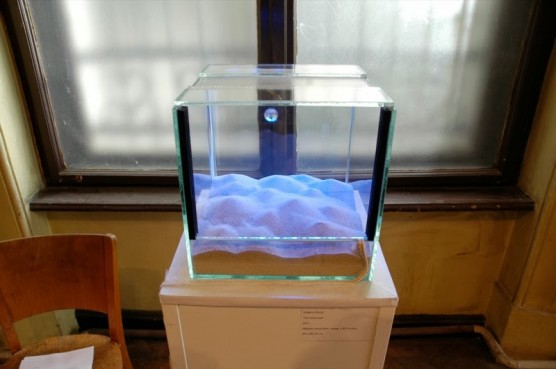
The Exoticiser; Sand, alternating LED lights, glass terrarium; Exhibition view, Geozavod Belgrade, 2013
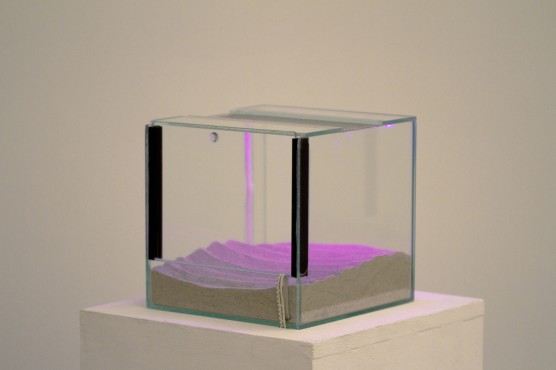
The Exoticiser; Sand, alternating LED lights, glass terrarium; Exhibition view: Moravska Galerie, 2013, Brno, Czech Republic
When deconstructing an exotic entity, two parts are perceived: on one hand the main substance – object and on the other, the attribute or adjective attached to this object, together creating a new physical and semantic construction which is perceived as being exotic (i.e. tropical fruit). In defining a system as to how an object is “inaugurated” into this category, I try at the same time to break this myth and offer a conceptual contraption for the cause.
For the exoticiser, a terrarium was chosen, a space already fabricated for the purpose of housing an exotic environment. Here it provides a conceptual space where the combination of different objects, entities and attributes can occur in any possible form and renders initially ordinary objects temporarily shifted to being exotic.
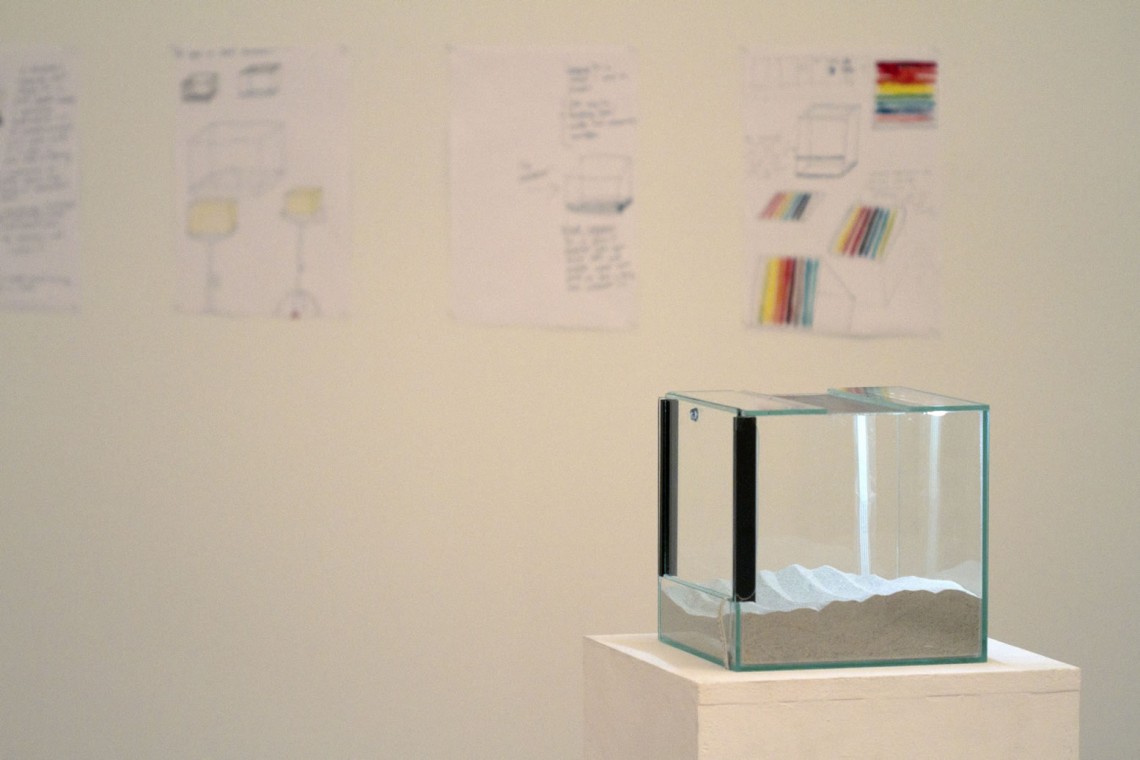
Exhibition view: Moravska Galerie, 2013, Brno, Czech Republic
The work was presented along with presentations by:
Joan Ballesté (ES), Masha Hupalo (RU), Maria Christina Hilber (IT), Sergio Valenzuela (CL), Al Teleki (VE), Sebastian Kienzl (AT), Stefanie Koemeda (CH), Max Kropitz (AT), Isidora Krstić (RS), Ondřej Merta (CZ), Frida Robles (MX)
Courtyard and attached spaces of Governor’s Palace / Nádvoří a přilehlé prostory Místodržitelského paláce, Moravské náměstí 1a, Brno, Czech Republic
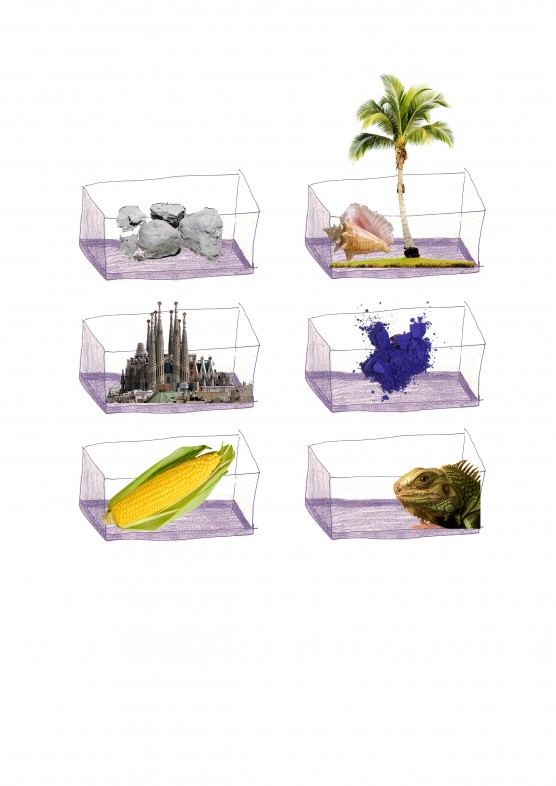
Digital collage, 2013, 21x29.7cm
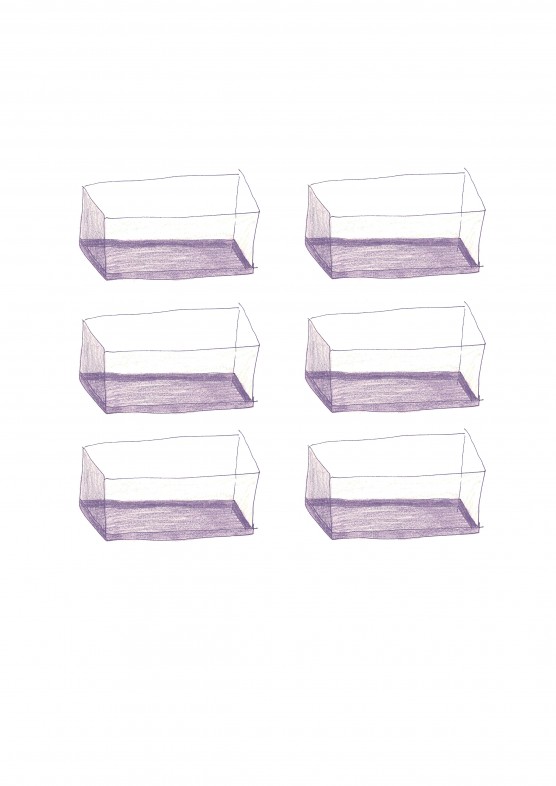
Pencil on paper, 2013, 21x29.7cm